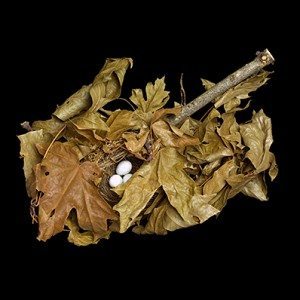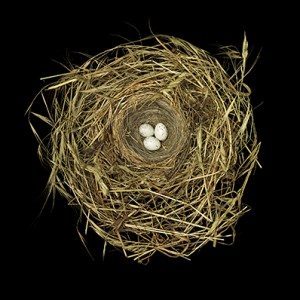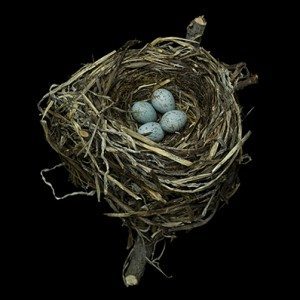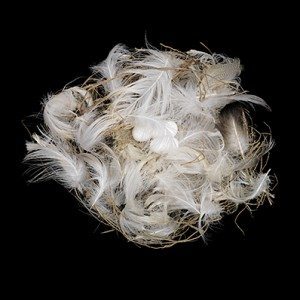Viewing birds through their nests
San Francisco photographer Sharon Beals will be a guest exhibitor at our Birdathon Awards Dinner on Sunday May 19th. Sharon is the author of Nests: Fifty Nests and the Birds that Built Them, published by Chronicle Books. For the nests in her book, she turned to the collections of the California Academy of Sciences, the Museum of Vertebrate Zoology, and the Western Foundation of Vertebrate Zoology. Join us at the Birdathon dinner to meet Sharon and see some more of her work! (Note: Registration deadline for the dinner is Tuesday May 7th.)
The following is an excerpt of an interview with Sharon Beals by Chuck Hagner, from BirdWatchingDaily.com.
——————————————
BirdWatching: Where did the idea for the book come from?
Beals: The idea evolved over a 10-year trajectory that began after reading Scott Weidensaul’s amazing book Living on the Wind: Across the Hemisphere with Migratory Birds. Besides explaining how birds manage to find their way — navigating by stars, magnetic fields, polarized light, or even what might be some inherited instinct — he also talks about what they encounter along the way, and at either end of these journeys.

And as most of your readers may already know, migratory hazards and habitat loss are affecting so many birds around the world. I had already been interested in native plants and habitat restoration, but this book was the inspiration to learn as much as I could about what birds need to survive and about what I do in my own life that affects the welfare of birds, even at a distance.
BirdWatching: What made you ask, in 2007, to see the collection of nests and eggs at the California Academy of Sciences?
Beals: I wanted to share what I was learning, and to reach a larger audience than the already-converted choir of birders and native-plant aficionados. How to do that with my skill and artistry eluded me. It was only after photo-ing some of a friend’s innocently but, as it turned out, illegally collected nests (now either returned to the wild or donated to the Academy for use in nature education) that I felt that I had found a subject matter that would engage a wider public and, hopefully, engender their interest in birds.

BirdWatching: Are nests more of scientific or artistic interest to you?
Beals: I would say that the nests first spoke to me artistically, since sticks and twigs are in my preferred color palate, but I think that attraction has an element of science in it. I don’t think that, for some of us artists (and hopefully viewers), we can make that separation. Maybe it is because the nests are all about science, with remnants of a bird’s habitat and their methods of construction, that we see them as an art form. I hope this isn’t too confusing.

BirdWatching: I was struck by the string, paper, ribbon, plastic, and other detritus that birds (such as the House Finch) incorporated into their nests. What do nests that contain human detritus tell us about the birds that constructed them? And about us humans?
Beals: I think, in short, that the birds are expeditious when it comes to the task of house building. Even the Greater Roadrunner nest (page 55), built in 1908, has a little scrap of burlap, a suitable substitute for a snakeskin, one of the regular ingredients of their nests.
What a bonanza that sheep’s wool must have been for that Western Kingbird (page 109)! Or the yarn and pheasant feathers for the Common Rock Sparrow (page 43), even back in 1938. Some of their choices might be, like bowerbirds, as mate attracting, or as pure fancy. I also read that hummingbirds will use blue paint chips in place of lichen; maybe like blue eggs, this is a camouflage that mimics the color of sky.
What I think it says about us humans is that we might be removing the natural materials that some birds would normally use to build nests, and our detritus might be the only options that they have to finish off a nest.
Of course, many birds, like the House Finch (page 67), have only benefited by our alteration of habitats, thriving as we spread across the continent and famously using almost any object, from tin cans to cars, for a nest cavity and even nails as nest-building materials. While our leavings might be fanciful and useful nest ingredients for some birds, for others, pardon the obvious, they are serious hazards.

BirdWatching: Which nest in the book is your favorite? Why?
Beals: Ohhh, if this were an audio interview, you would hear a big sigh. It’s so hard to choose a favorite. I love the deep woven cup of the Swainson’s Thrush (page 99), because it is the nest of one of my favorite birds, whose song I know from my childhood — but also because I felt like I was touching history. When I read the collection tag, I learned that this particular nest was collected by Joseph Grinnell, the scientist whose collections and field-research archives were the foundation of the Museum of Vertebrate Zoology.

I love the little Verdin nest as well (page 105), because it is such a defiant little fortress. But my heart also is moved not just by the fragile beauty of the little collection of gull feathers of the Bank Swallow’s nest (page 25), but because I go and see them at Ocean Beach, San Francisco, every spring, when they return from their long migrations and start digging the tunnels to their new nest cavities. And I always return a few weeks later, when every tunnel entrance is filled with at least one, if not a few chicks, waiting for their parents to arrive with the next insect.
—————————————
Click here for details and registration for the Birdathon dinner, on Sunday afternoon May 19th in Oakland. For more about Sharon Beals’ photography see her web site at http://www.sharonbeals.com/
